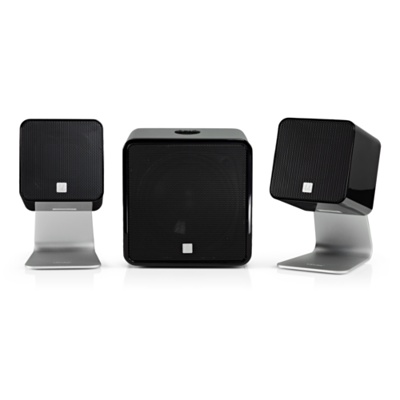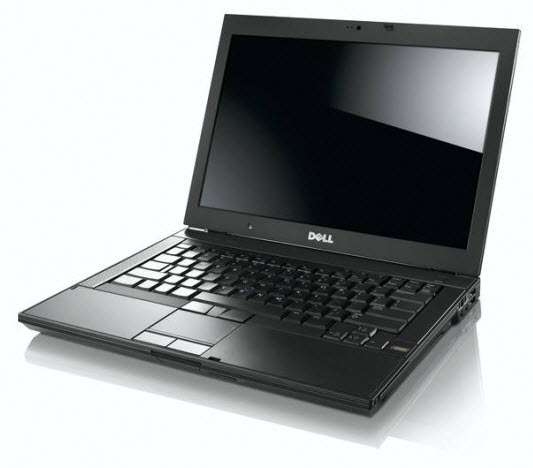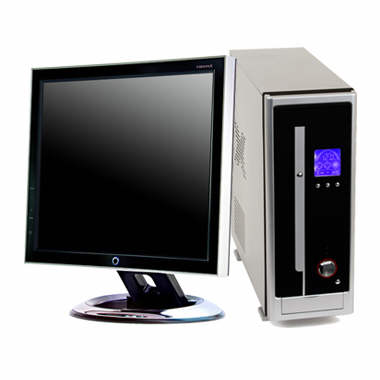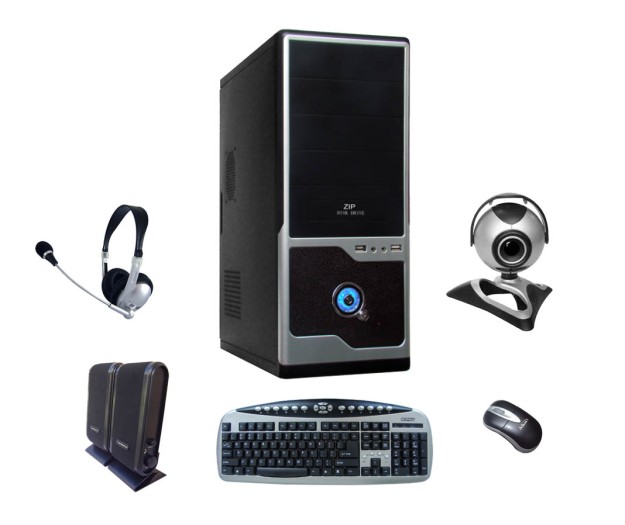Tag Archives: Bay area
PC Troubleshooting Tips
Nothing can put a damper on productivity quite like a computer that crashes on a regular basis. Sometimes, a crash is preceded by the dreaded “blue screen of death” or another warning; other times, a computer simply shuts off without any warning at all. In either case, the end result is a whole lot of frustration, aggravation and lost work. If your computer has been crashing frequently, you’d probably like to put an end to it. Unfortunately, getting to the bottom of things if often easier said than done. The following tips about improving your computer’s performance, though, are excellent places to begin.
Possibility #1: Corrupted System Registry Files
Every Windows-based PC has something called a Windows registry. The registry contains several files that are integral to the performance and operation of your computer. Over time, some of those files can become corrupted, be misplaced or get lost altogether. When that happens, the system registry becomes compromised – and frequent crashes are all-too-common symptoms. The best way to rule this possibility in or out is by running a Windows registry cleaning program. Such programs scan your Windows registry for problems then automatically make repairs. If you run a registry cleaner and the crashes persist, they are probably being caused by a different issue.
Possibility #2: Disorganized Files
Windows operating systems handle file organization in a way that isn’t very intuitive. Basically, they break files up and fit them into gaps in the computer’s memory. As time goes by, these disorganized files can prompt frequent crashes. Luckily, a great optimization solution is built right into Windows-based PCs: the disk defragmentation utility. Although its location on a computer varies, you can generally locate it within the System and Security section inside the Control Panel. By running a defrag once every few months, you may be able to keep those pesky computer crashes at bay.
Possibility #3: Malicious Software
Malicious software can take many different forms. Sometimes, it’s a virus that is accidentally unleashed after opening a strange email; other times, its adware that tags along with other information that is automatically downloaded from a website. Whatever type it is, there’s no question that malicious software can wreak havoc on a computer’s performance. Happily, there are many topnotch programs out there that regularly scan your computer for the presence of such problems – and that help guard against them, too. Buy one, install it and use it regularly; your crash issues may come to an end.
Possibility #4: Too Little Available Memory
When you buy a new computer, it feels like there’s no end to the amount of memory that it has. Of course, this isn’t true at all. As never-ending as the available memory on your PC may initially seem, the fact is that it can be depleted with incredible speed. You can find out for sure by checking the information within “My Computer.” If it appears that your available memory is low, you can use a PC cleanup program to remove unnecessary files; such programs remove things like temporary Internet files and other file debris that can suck away much-needed memory.
Possibility #5: Overheating
If you’ve run through all of the preceding possibilities and continue experiencing frequent crashes, a hardware issue could be to blame. An easy one to rule out is overheating. A computer’s CPU, or central processing unit, includes a fan that is designed to keep it running cool. Sometimes, the fan wears down and doesn’t work as efficiently; other times, it’s just not able to handle the work that your computer has to do. In either case, buying a bigger, better fan isn’t very expensive. If it puts an end to your PC crashing problem, it will have been more than worth it.
Don’t Put Up with Frequent Crashes!
As discussed, frequent computer crashes can be triggered by a wide variety of issues. Luckily, many of these issues are relatively easy to remedy. Work your way through the preceding list; chances are, you’ll be able to pinpoint the problem and put an effective cure to work. Nine times out of ten, a computer simply needs a little bit of routine maintenance to get it back on track again. In the future, keep these points in mind. Any time you buy a new computer, keep up with its basic maintenance right from the get-go. By doing that, you could avoid “blue screen of death” and crashing problems altogether – and that’s something that you’re bound to appreciate!

We Sell Used Computers and Laptops
Computer Accessories
How to Quickly Rename Multiple Files in Windows
 Rename multiple files in Microsoft Windows XP Explorer by following the below steps.
Rename multiple files in Microsoft Windows XP Explorer by following the below steps.
- Open Explorer.
- In Explorer select all the files you wish to rename.
- Once the files have been selected press F2 and type the new name for the files. For example, typing “test” will rename the files to test, test(1), test(2), test(3) etc. If you have show file extensions enabled, make sure to also type the name of the file extension you’re renaming.
If you need each of the files renamed as a different name, you can also quickly go through files by following the below steps.
- Highlight the first file and press the F2 key.
- This will open the rename for the highlighted file. After the file has been renamed press the tab key to go to the next file.
Finally, if the above suggestions don’t help or you need a more powerful tool for renaming multiple files in Windows we suggest the Bulk Rename Utility. (source: Computer Hope)
General Computer Cleaning Tips
Below is a listing of general tips that should be taken when cleaning any of the components or peripherals of a computer as well as tips to help keep a computer clean.
- Never spray or squirt any liquid onto any computer component. If a spray is needed, spray the liquid onto a cloth and then use that cloth to rub down the component.
- You can use a vacuum to suck up dirt, dust, or hair around the computer on the outside case. However, do not use a vacuum for the inside of your computer as it generates a lot of static electricity that can damage the internal components of your computer. If you need to use a vacuum to clean the inside of your computer, use a portable battery powered vacuum designed to do this job or try using compressed air.
- When cleaning a component or the computer, turn it off before cleaning.
- Be cautious when using any cleaning solvents; some individuals may have allergic reactions to chemicals in cleaning solvents and some solvents can even damage the case. Try to always use water or a highly diluted solvent.
- When cleaning, be careful not to accidentally adjust any knobs or controls. In addition, when cleaning the back of the computer, if anything is plugged in, make sure not to disconnect any of the plugs.
- When cleaning fans, especially the smaller fans within a portable computer or laptop it’s suggested that you either hold the fan or place something in-between the fan blades to prevent it from spinning. Spraying compressed air into a fan or cleaning a fan with a vacuum may cause damage or back voltage to be generated.
- Never eat or drink around the computer.
- Limit smoking around the computer.
Although many companies have created products to help improve the process of cleaning your computer and peripherals, users can also use household items to clean their computers and peripherals. Below is a listing of items you may need or want to use while cleaning your computer or computer peripherals.
Keep in mind that some components in your computer may only be able to be cleaned using a product designed for cleaning that component; if this is the case, it will be mentioned in the cleaning tips.
- Cloth – A cloth is the best tool used when rubbing down a component; although paper towels can be used with most hardware, we recommend using a cloth when ever possible. Caution: We only suggest you use a cloth when cleaning components such as the outside of the case, a drive, mouse, etc. You should not use a cloth to clean any circuitry such as the RAM or motherboard since they can generate ESD that can damage electronics.
- Water or rubbing alcohol – When moistening a cloth, it is best to use water or rubbing alcohol. Other solvents may be bad for the plastics used with your computer.
- Portable Vacuum – Sucking the dust, dirt, hair, cigarette particles, and other particles out of a computer can be one of the best methods of cleaning a computer. Over time, these items can restrict the airflow in a computer and cause circuitry to corrode. Do not use a standard vacuum as it can generate a lot of static electricity that can damage your computer.
- Cotton swabs – Cotton swaps moistened with rubbing alcohol or water are excellent tools for wiping hard to reach areas in your keyboard, mouse, and other locations.
- Foam swabs – Whenever possible, it is better to use lint-free swabs such as foam swabs. (source: Computer Hope)
The Modem: Much More Than a Dial-Up Sound
 56k. Nope, not your older brother’s salary. Nor the number of spare buttons in your grandma’s closet. It’s the bitrate of one of history’s most commercial modems.
56k. Nope, not your older brother’s salary. Nor the number of spare buttons in your grandma’s closet. It’s the bitrate of one of history’s most commercial modems.
You might recognize this era of modem technology less by looks and instead by soundtrack. We listened to the “dial-up sound” when we raced home from school to check our AOL accounts; when we logged in to eye the Clinton-era stock market.
n an effort to learn more about the modem than its overture, let’s take a look at its uses, history and a teeny bit of tech specs.
History
In 1958, the year the word “modem” was first used, the U.S. SAGE air defense system incorporated Bell 101 modems to connect remote air bases and control centers via dedicated phone lines. Its bitrate moved at a whopping 100 bits per second.
 In 1962 the company updated the Bell 103A to run on consumer phone lines. With new technology literally streaming through its wires, it’s no wonder Bell (AT&T) kept a tight lid on the market. The company would only allow Bell-branded devices to tap those phone lines for service. However, upon facing charges of monopoly in 1968, the company finally eased its requirements.
In 1962 the company updated the Bell 103A to run on consumer phone lines. With new technology literally streaming through its wires, it’s no wonder Bell (AT&T) kept a tight lid on the market. The company would only allow Bell-branded devices to tap those phone lines for service. However, upon facing charges of monopoly in 1968, the company finally eased its requirements.
But it wasn’t until the early ’80s that modem manufacturers sliced off their own pieces of the pie. In 1981, the market welcomed the Hayes Smartmodem, which featured a small command pad that controlled computer functions, such as telephone dialing and call answering. The controls eliminated the previous two-step setup most modems required to bridge a computer and a telephone line. Most modern modems still use some version of the original “Hayes command set.”
Terminology
The Atlantic, routers essentially bridged 19th century radio and telephone technology with 20th century digital systems.
In fact, the screechy dial-up sound you heard when connecting your computer to a phone line was the data translation itself. In order to juice a telephone line for data, a computer would have to produce tones within the frequencies of human speech (about 300 to 3,300 hertz) — in other words, it would have to place a telephone call. That’s where a modem steps in. The different tones called for sound waves of varying speeds, which then matched up and carried data to your computer.
In a 1997 guide to modem technology, Neils Jonker writes, “Sending data over a modem line is no more than sending an endless series of ‘beeps’ of a slightly different pitch. Of course, for every bit there needs to be a beep. Needless to say that the faster the beeps can flow, the faster your bits will go.”
That’s why modems are measured in bits per second, which indicate how many bits can travel through a phone line, for example. The modem you used to dial into GeoCities likely topped out somewhere around 56,000 bits per second.
If you thought that 56k dial-up was slow, imagine some of the earliest modems, which transferred a piddling 110 bits per second. On the other hand, those modems weren’t exactly used for Internet purposes.
But what do the last 55 years of modem technology have to do with us today? Well, we still use modems in Wi-Fi routers, game consoles and many smartphones and digital televisions. Only, as with most everything else, the technology has gotten much more compact, and is oftentimes smaller than a SIM card.
So, don’t mourn the dial-up modem of your youth too much. Most likely, you’re arm’s-width away from one of its younger cousins.
(source: Mashable)
New Chrome Extension Lets You Save Web Content to Google Drive
Google has launched a new extension for Chrome called “Save to Drive,” enabling users to save web content to their Google Drive.
After installing the extension, users will get an additional icon in Chrome, letting them save an image, an entire page or an image of the visible page to your Drive.
Users can also save the HTML source code of a webpage or a complete webpage in web archive (.mht) format. Finally, they can simply right click on web content to save it directly to Drive.
 The extension offers several options to manage saved web content: Users can immediately open the file in Drive, rename it or view it in their Drive list, which provides additional options, such as sharing the file or placing it in a folder.
The extension offers several options to manage saved web content: Users can immediately open the file in Drive, rename it or view it in their Drive list, which provides additional options, such as sharing the file or placing it in a folder.
Google has also added new options for managing the images users store in Drive, including zoom by scrolling, new “fit to page” and “100%” buttons, as well as the ability to comment on a specific part of an image. (source: Mashable)





